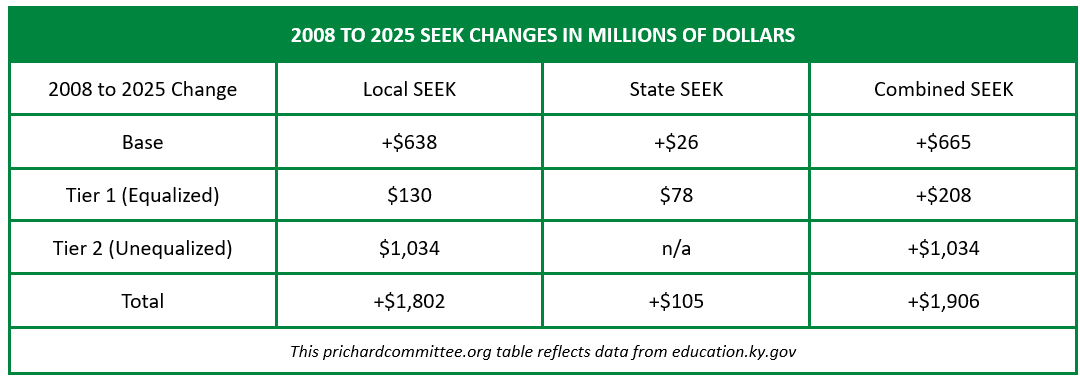We’re moving quickly to a final state budget.
Late on March 27, the Senate approved spending plans hammered out by a combined House and Senate committee, and on March 28, the House approved the same document. The bill will now go to the Governor for next steps. Here’s a rapid look at how the current version compares to the Big Bold Ask‘s call for major steps up in Kentucky education investment.
Parts of the newest budget language are good news:
- All-day kindergarten funding meets the full Big Bold Ask.
- Public universities and KCTCS funding meets and exceeds the Ask, including performance-based incentive funding.
- College Assistance program similarly meets and exceeds the Ask.
- K-12 school transportation funding meets and exceeds the Ask amount set in 2019 (though it falls short of the most recent calculations of full school transportation costs.
- Teaching quality efforts included funding for the Read to Succeed initiative begun in 2022 and for added stipends to teachers who earn National Board certification.
Other parts raise concerns:
- Teaching quality efforts do not include either broad or targeted efforts to rebuild funding for professional development, leaving most of the quality portion of Big Bold Ask unanswered.
- The Child Care Assistance Program reflects increases that are valuable and yet too small to address Kentucky’s long-term need for early childhood opportunities that prepare children for future learning and too small to meet the immediate challenge of avoiding a sharp reduction in child care access for low-income children and their working parents.
- Preschool receives no added dollars, the only portion of the Ask with no gain at all.
Here’s a chart version comparing those Big Bold Ask elements and the budget for FY 2026 (the second year of the two-year spending plan).

In addition to Big Bold Ask moves, the newest budget includes some further changes in SEEK formula funding. SEEK (short of Support Education Excellence in Kentucky) is the state's main vehicle for funding K-12 public education. Here are three developments to note:
- SEEK starts with a base guarantee per pupil. set at $4,200 per student for the current fiscal year and now scheduled to rise to $4,326 in FY 2025 and $4,586 in FY 2026.
- Total SEEK base funding will decrease $112 million in FY 2025 and then partially rebound by $91 million in FY 2026. (Yes, the budget does increase the base guarantee per pupil each year, but local contributions are also rising, and that means the state portion of the guarantee will go down.)
- Tier 1 funding will increase $40 million in FY 2025 and then be reduced by $11 from that level in FY 2026, and that change will come with a noteworthy innovation. Since 1990, Tier 1 has allowed districts that raises more than the base SEEK 30¢ tax revenue to receive state equalization funding of up to 15% of their total base guarantee amount if they collect added local revenue to qualify. The new budget moves that maximum up to 17.5%.
- Combining base funding, Tier 1, and transportation, total formula funding will increase $13 million in FY 2025 and an additional $119 million in FY 2026. As noted in our "SEEK Explainer" post earlier in the session, those three line items are the part of state funding that districts can use for their regular classroom staffing and support, including pay increases.
For readers interested in other specific programs or in a fuller view of education spending, here are the newest versions of our overviews for early childhood, K-12 learning, and postsecondary education.The Conference version of the budget bill is the original sources for this analysis, and those who love detail may want to take a look at that, too.












